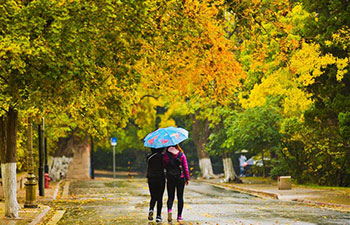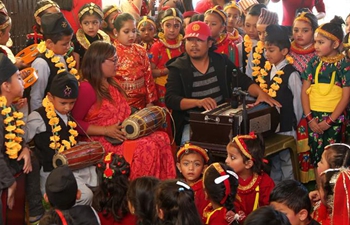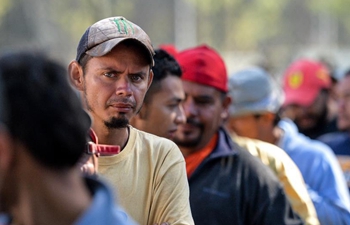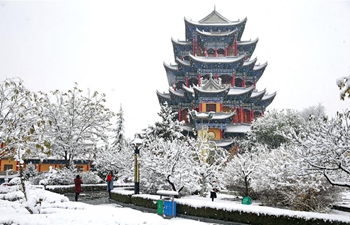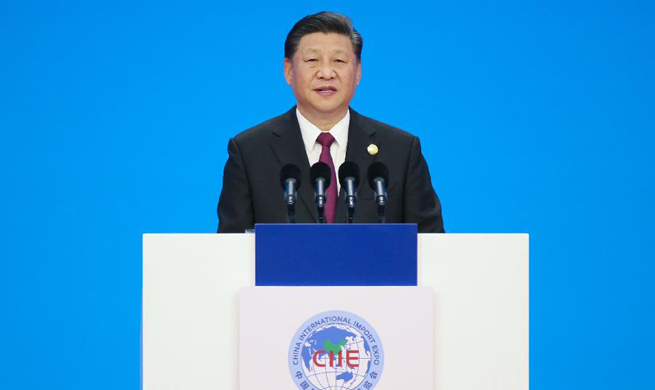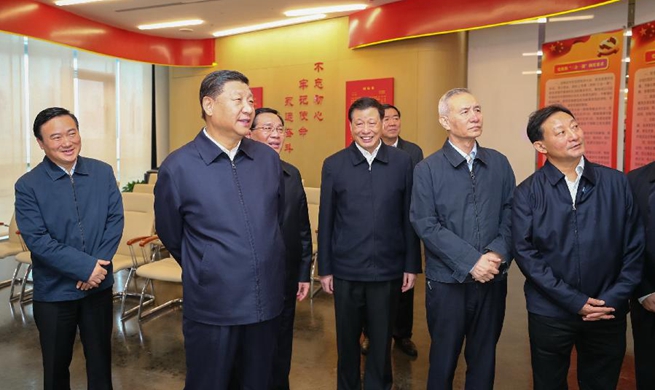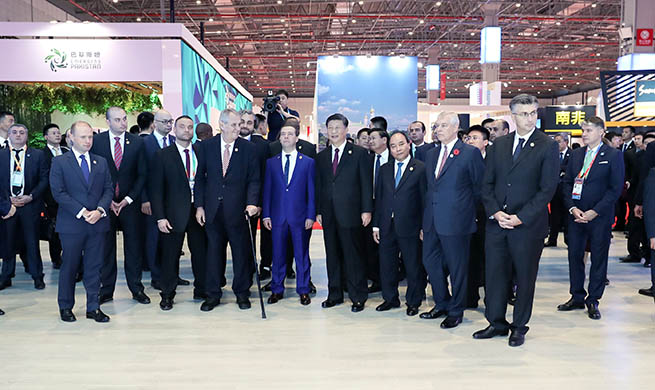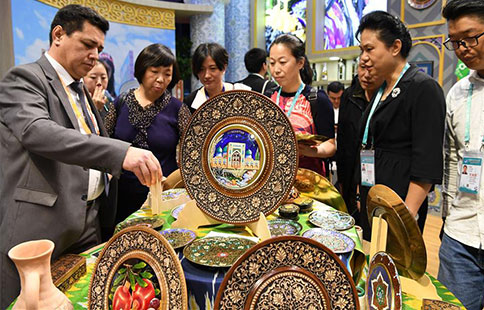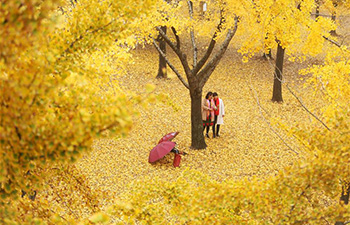WUHAN, Nov. 7 (Xinhua) -- Wang Shaobin says her team is no ordinary club of amateur "dancing aunties" that used to frequent Chinese news stories for vexing residents with noisy night dances.
Leading a team of 36 costumed seniors swaying to a lively mixture of traditional opera and rap, Wang said they were not just spare-time exercisers but citizens eager to promote local culture to the outside world.
"We have won multiple awards at the city and provincial levels and have performed on China Central Television (CCTV)," the 66-year-old retiree in Huanggang city, central China's Hubei Province, proudly told Xinhua.
Wang may be representing the new image of "square dancers" who are winning hearts of officials and artists for being an example of leading a healthy lifestyle for China's fast-growing elderly population.
The popularity of "square dance," an open-air exercise practiced in groups and with music, used to face a slew of controversy as legions of elders, mostly female, occupied squares, parks and even streets where they dance to loud music. Their noisy dances were a source of complaints, sometimes even triggering violent retaliation from disturbed residents.
But within just a few years, this hybrid of swing dance and aerobics made its way onto China's most-watched TV galas, and cities and provinces are now rushing to hold competitions and performances in their names.
Last week, an Olympic stadium in Beijing held a square dance performance featuring square dance teams from across China, an event whose organizers included the Ministry of Culture and Tourism and the General Administration of Sport.
In the same week, over 550 square dance lovers joined Hubei's provincial show. Many were selected from elderly streetside exercisers who performed in the limelight for the first time.
One participant, 70-year-old Xu Rang, explained the logic behind the national enthusiasm for the dance.
"The biggest advantage of square dance is that everyone can join, male or female, old or young," said Xu, who leads a rare all-men team in the contest. "It makes us feel happier, healthier and we make new friends."
RAISING HIGHBROWS
Chinese governments have been quick to recognize such fitness and socialization perks for the elderly, especially as China embraces a fast-aging society. China's population aged over 60 reached 241 million by the end of 2017, a figure expected to double around 2050.
In 2015, Hubei's government called for holding large-scale performances for square dancers while advising them to avoid disturbing other residents during their daily practices. It also promised to invest 20 million yuan (2.9 million U.S. dollars) annually to build more than 10,000 cultural squares for square dancing and other cultural activities by 2020.
"In communities where the dance is popular, the ethics are good and neighbors live in accord," said Li Bo, an official with Hubei's department of culture, adding that square dancing helps fend off harmful entertainment like gambling in Chinese communities.
Wang Yuanping, one of China's top composers, ascribed the popularity of square dance to the elderly generation's unsatisfied cultural and artistic demands in their youth.
"Now thanks to the official support, many are able to realize their dreams of being on stage," said Wang, who has composed several songs and music for square dances.
Wang is among the growing cohort of musicians and choreographers who hope to jump on the square dance bandwagon to promote Chinese cultures, saying the seniors had a natural affinity with ethnic and local cultures.
Zhou Manli, another top-level composer in China, agrees. "We're going to use square dance as a vehicle to promote all the local cultural treasures."




